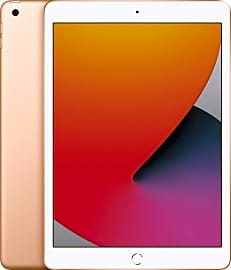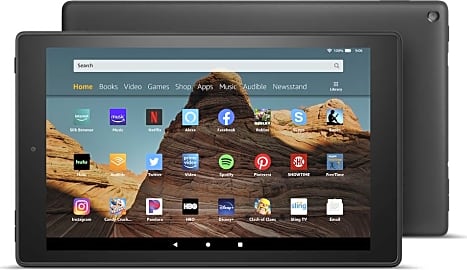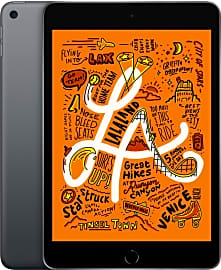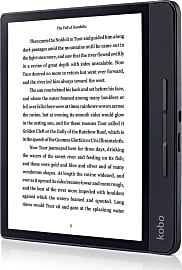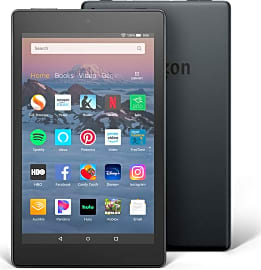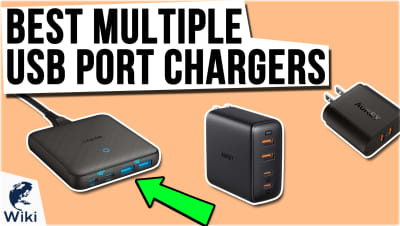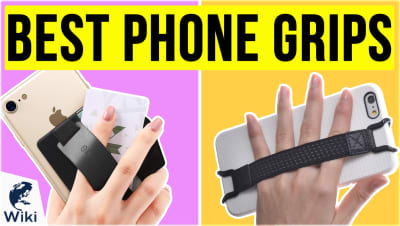The 8 Best E-Readers

This wiki has been updated 40 times since it was first published in May of 2015. Forget your old dog-eared paperbacks with their bookworms and clouds of dust. With an E-reader, you can carry around thousands of books, magazines, games, apps, and videos in one compact and lightweight device, all while helping preserve the environment. The models listed here represent some of the best options on the market for upgrading and modernizing your library. When users buy our independently chosen editorial choices, we may earn commissions to help fund the Wiki.
Editor's Notes
April 27, 2021:
Still at the front of the pack is the Kindle Oasis, which has seen another round of updates and remains the best-looking and most convenient device specifically for reading. New to our list, though, is the Apple iPad, which is far more versatile than a standard e-reader. If you don't already have a good tablet to use, we suggest considering the 8th-generation iPad or even the Apple iPad Mini if you want something smaller.
If you don't mind being slightly limited in terms of software ecosystems, the Amazon Fire HD 10 and Amazon Fire HD 8 are worth looking at. Alternatively, the Kobo Clara HD Carta and Kobo Forma aren't terribly versatile or refined, but they do come at a low price and with a simple and straightforward aesthetic.
March 17, 2020:
A few important upgrades have come along to the flagship models in both the Kindle and Fire lineups, but some of the most interesting new additions to this ranking come from some unexpected names. Sure, the Apple iPad Mini is incredible and everything you'd expect from a good Apple product, and the Amazon-fuelled offerings provide some excellent budget tablets and what is probably the simplest, most reliable e-reading experience out there.
But there are some newcomers on the block, including the Boox Nova Pro 7.8 ePaper and the Likebook Mars Carta that stand poised to take a chunk out of Amazon's profits. They do so by employing a modified version of an open source Android software, and by making good use of physical e-ink technology that's getting easier and less expensive to produce.
Then, there's the Sony DPT-CP1/B Digital Paper. At 10 inches, it's about the same size as the Amazon Fire HD 10, but it doesn't have that device's high definition color screen. That's because it's intended for business and creative use, interfacing with an excellent stylus to allow for comprehensive note taking and nuanced drawing to take place. For simply reading books, it's likely more than you'd want to bother with, but if you want to save some paper in an office or artistic environment, it's a fine choice.
This Is A Book Hoarder's Dream
Packing hundreds of books into boxes is difficult enough without having to obsessively maintain their categorical and alphabetical order.
While I've never been accused of being a hoarder by the popular definition, I have been called out on several occasions for what borders on an unhealthy appetite for books. I've loved just about everything a physical book has to offer since I was a child: the faintly moldy smell of the pages and bindings on older books, the scent of freshly hewn pulp wafting off of a brand new text, the feel of the pages and the hard covers, not to mention the promise of the experiences and wisdom contained in each.
Then, invariably, something would happen that would make me downsize my considerable book collection. More often than not, it would be a move. Packing hundreds of books into boxes is difficult enough without having to obsessively maintain their categorical and alphabetical order. Carrying said boxes out to a car, moving truck, or, worst of all, to the much-feared post office, is an expensive and back-breaking nightmare.
Eventually, after much deliberation and soul searching, it made sense to pare down my vast physical collection to the most important tomes, and to begin the slow, steady transfer of my library to a digital format. We'd all done the same with our music long ago; it was time I joined the 21st century.
I must say that I was very pleasantly surprised by the e-reader experience, particularly at how they got the screen to be so easy on the eyes. This is thanks to a development called electronic ink, which moves plastic granules of black and white ink through a fluid housed in spherical microscopic chambers. The white granules are positively charged and the black granules are negatively charged.
Tiny electrodes switch on or off depending on the desired ink color at a given pixel location, creating a mixture of text and white space akin to a very finely rendered Pointilism. You could almost think of it as a high-tech Etch-a-Sketch that boasts roughly twice the resolution of the average computer screen while using a fraction of the power.
The Screen And The Machine
Among the available e-readers on the market, there is a distinct division. We spent some time above discussing the technology behind what could be called a traditional e-reader, built almost exclusively for the enjoyment of books in black and white. Other e-readers, however, operate much more like tablets than anything else, but they're usually much less expensive than their full-featured relatives.
We spent some time above discussing the technology behind what could be called a traditional e-reader, built almost exclusively for the enjoyment of books in black and white.
If you're more interested in a suite of capabilities, from reading eBooks to streaming Netflix series, an e-reader that's modeled more after a tablet would be a better pick. Not only would it save you the expense of additionally buying a tablet, it would also keep your total device count down by one.
The main problem with e-reader tablets is that they tend to perform much more poorly than their pricier counterparts. Their processors usually can't handle quite as much of a workload, their RAM is smaller, their battery life shorter, and their screen resolution is often lower. Also, since the screen design is closer to a typical computer or cell phone, they are much harder to use in the sun if you're reading, for example, at the beach.
What the more traditional e-readers lack in versatility, they more than make up for where the tablets fall short. They can store all the books you could ever want to read, their operating time is usually exponentially longer than a tablet's, and they're phenomenally easy to read in direct sunlight. Sure, House of Cards would look particularly weird rendered by electrophoresis (the electric ink process described above), but the novelization of the show would look great.
Papyrus On a New Platform
From the first scraps of paper made by the Egyptians over 5,000 years ago to the contact lenses that will eventually serve as our permanent augmented reality computer screens, humans have consistently innovated in the name of communication. E-readers are no exception to this innovation, though their trip to the marketplace wasn't always so direct.
E-readers are no exception to this innovation, though their trip to the marketplace wasn't always so direct.
Since the 1970s, writers, historians, and various literati have been collecting electronic copies of books for their future preservation and distribution. Michael Hart's Project Gutenberg is a wonderful example of this. Named for the inventor of the moveable type printing press, the project makes out-of-copyright books available digitally for anyone who wants them.
In the 1990s, a few companies offered rudimentary e-readers to consumers, but their inefficiency, poor quality screens, and small library of available titles doomed them to insignificance.
The next big experiment in e-readers came from Amazon, which launched its Kindle reader in 2007. Given the company's extensive access to publishing houses and firm placement on the web, there were soon enough titles out for purchase to make the Kindle seem like a viable option for readers.
Soon, a dozen other companies cropped up, all hoping to capitalize on the Kindle's impending success. One such company, a little giant you may have hear of called Apple, put forth its iPad in 2010, pushing the market away from traditional e-readers and more towards multifaceted tablet devices.


